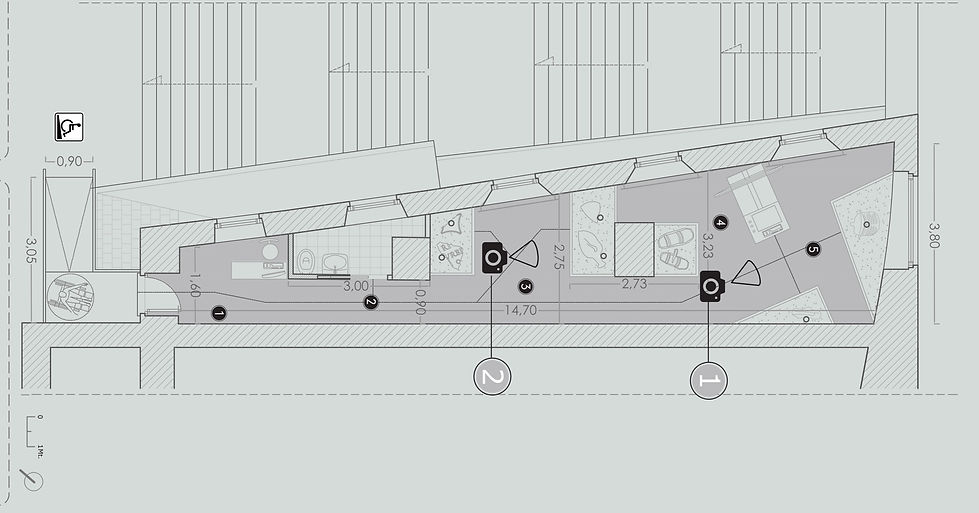FRANCESCA B OZZA STUDY GOD
NEW UNDERWATER ARCHAEOLOGICAL MUSEUM
S. FELICE CIRCEO, 2020
As part of the Executive Project “Ulisse – Underwater and Littoral Itineraries to Safeguard Submerged archaeological heritage”.
Year 2020
“Ulisse – Underwater and Littoral Itineraries to Safeguard Submerged archaEological heritage” promoted by ICR with partners: Superintendence of Archaeology, Fine Arts and Landscape for the Provinces of Frosinone, Latina and Rieti, Regional Park Authority “Riviera di Ulisse”, – Notice DTC TE2: Research and development of Technologies for the Enhancement of Cultural Heritage”
–- Drafting of the general report according to the RUP instructions; Total funding granted for the design of the first phase equal to €56,800.00

ULISSE ROOM | SAN FELICE CIRCEO ARCHAEOLOGICAL MUSEUM

GROUND FLOOR PLAN | SAN FELICE CIRCEO ARCHAEOLOGICAL MUSEUM
This project involves the setting up of a room dedicated to underwater archaeology obtained by redeveloping the former municipal Senior Citizens' Centre in the historic centre, located in Piazza Vittorio Veneto in San Felice Circeo.
The exhibition hall of San Felice Circeo will be adapted to allow for expanded accessibility, and will be equipped with a diorama for tactile experience and an interactive device for VR and AR experience, in order to expand the enjoyment of the underwater heritage also to those who do not take part in diving but above all to interest a young and very young audience.

EXHIBITION OF FRAGMENTS AND OBJECTS OF ARCHAEOLOGICAL INTEREST. USE OF TABLETS FOR INCREASED ACCESS. | SAN FELICE CIRCEO ARCHAEOLOGICAL MUSEUM
Photographic and historical narrative material will be made available through various types of media, such as banners, roll-ups and information brochures.
The popular texts and the teaching handouts will be distributed in Italian, French and English and translated into Braille and the AAC symbol system – Augmentative and Alternative Communication [1] . The latter can be understood by children and young people with special communication needs where they can recognise the images and a specialised reader can read the words to them.
[1] AAC, any communication that replaces or augments verbal language that seeks to compensate for the temporary or permanent disability of individuals with complex communication needs (Asha – American Speech – Language – Hearing Association 2005). Reference association: ISAAC – “Augmentative and Alternative Communication”.